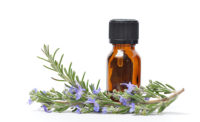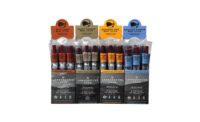Tech | Ingredients
Natural antioxidants expand

Several companies recently started using natural antioxidants and limiting the use of synthetic versions, such as butylated hydroxyanisole (BHA) or butylated hydroxytoluene (BHT). For example, sausage manufacturers commonly use BHA and BHT for dry sausages, but as processors clean up product labels, they have turned to plant-based antioxidants, such as rosemary, explains Terry Houser, extension meat specialist and associate professor in the Department of Animal Science at Iowa State University in Ames.
Commonly used in the industry, rosemary is a compound that has significant antioxidant capability from active antioxidant compounds, such as carnosic acid, which contain phenolic compounds. The phenolic compounds in antioxidants bind up oxidative compounds called free radicals, which prevents oxidation, and, in turn, extends shelf life and preserves product flavor among other benefits.
While many processors are switching out synthetic antioxidants for plant-based varieties, smoke also offers several phenolic compounds. Houser has done research using smoked sugar addressing foodservice bacon, which can be cured, cooked and then frozen, creating oxidation challenges, he explains. While nitrite is often added to cured meats to aid in oxidation prevention, Houser’s data has shown nitrite could not solve all oxidation problems. In turn, the research showed smoked sugar improves flavor stability of frozen sliced foodservice bacon. Houser has ongoing research on how to stabilize the fat in pre-cooked bacon.
Rosemary remains one of the most widely used plant-based antioxidants at this point because it has proven efficacy, has been used longer, is widely available and cheaper than other plant-based antioxidants. An antioxidant that can provide a constant supply to the industry is an important factor, explains Ranjith Ramanathan, associate professor in the Department of Animal and Food Sciences at Oklahoma State University in Stillwater. For this reason, rosemary dominates vitamins C and E and oleoresins. Phosphate, to a certain extent, can provide antioxidant action too, he says.
Green tea, which contains catechins with phenolic compounds, whether on its own or in combination with rosemary, also is appearing in meat and poultry products as an antioxidant. While not technically an antioxidant, cherry powder (or acerola), which contains ascorbic acid or vitamin C, also works to prevent oxidation. Ascorbic acid also can help extend color life of a product.
While the number of non-synthetic antioxidants continues to grow, processors still have to be aware of the properties of the antioxidant being used and whether it will be functional in their particular application, Houser says. For example, a processor may need to choose an antioxidant that is water-soluble and can be used in a brine.
The challenge with plant-based antioxidants is they typically cost more than synthetic.
“If it didn’t cost more money, everybody would already use them,” Houser says.
While the amount of BHA and BHT a processor can use in a product has a regulatory limit, natural antioxidant compounds offer more flexibility because they aren’t regulated. Additionally, natural antioxidant compounds allow processors to give a little more antioxidant protection to a product by adding them to other antioxidant compounds if it isn’t cost prohibitive for a processor. While using high levels of some natural antioxidants may cause some flavor profile changes, technology has improved to limit flavor changes. Price still often limits the amount of natural antioxidants used, Houser explains.
Despite natural antioxidants’ higher prices, several brands have entered the natural category, keeping non-synthetic antioxidants growing. Houser believes as natural antioxidants are used in greater volumes, their prices will come down.
While changing to natural can meet the expectation of consumers, for processors the quality and consistency of natural antioxidants can still be challenging, Ramanathan says. “Antioxidant consistency is the biggest challenge,” he says. “The natural antioxidants are dependent on the season and supplier.”
While not all natural antioxidants are created equally, natural antioxidants can be absolutely effective, Houser says. Processors must find a reliable supplier and work with the supplier to find the proper concentration and tailor the antioxidant compounds to the product’s needs, he adds.
Moving forward, Ramanathan believes the industry will continue to use more natural antioxidants. Additionally, he expects the use of natural antioxidants in packaging material to minimize quality changes. For example, instead of adding directly to the meat, antioxidant diffuse from packaging material to meat and meat products, he explains.
Houser says as research continues the industry will discover antioxidants are helpful in numerous products in which the industry currently doesn’t use them, specifically cured meat or other products that have a long shelf life. Houser also thinks the use of antioxidants will continue to grow in any product that is cooked, especially foodservice products not often vacuum packaged. NP
Looking for a reprint of this article?
From high-res PDFs to custom plaques, order your copy today!









